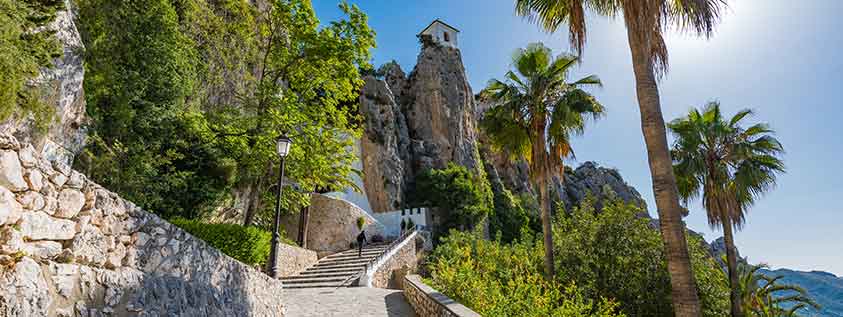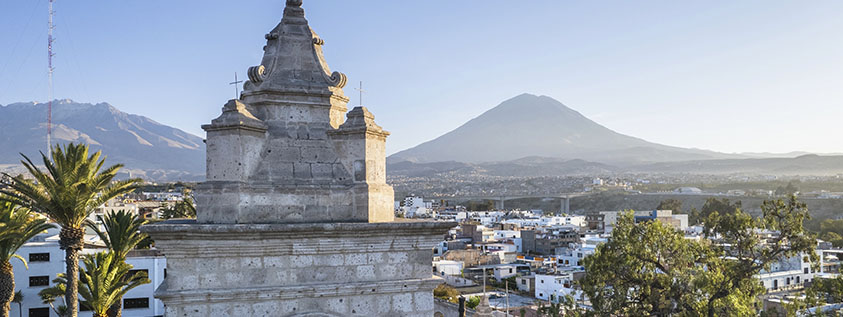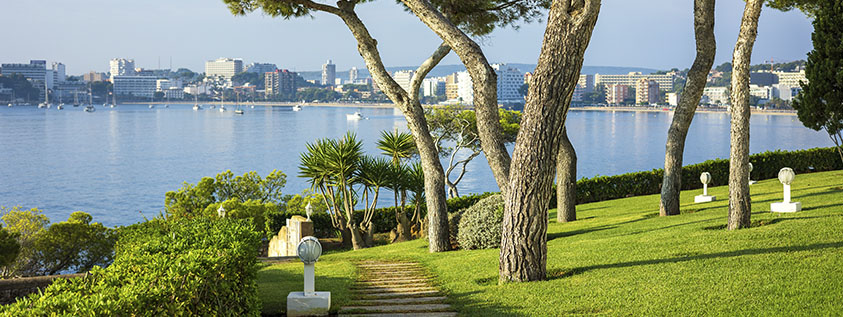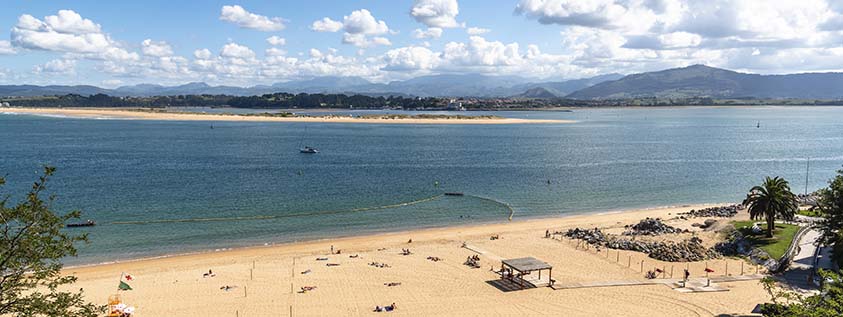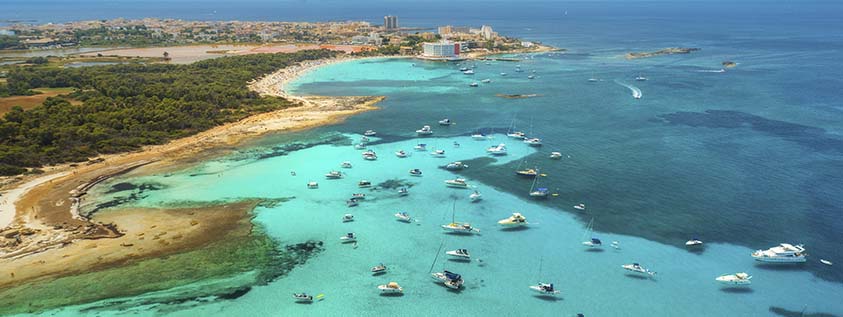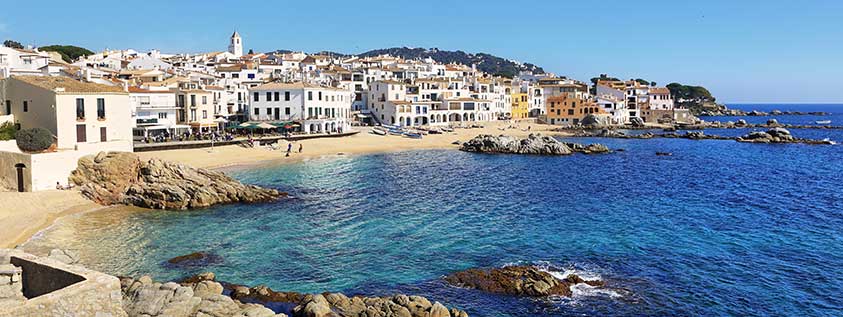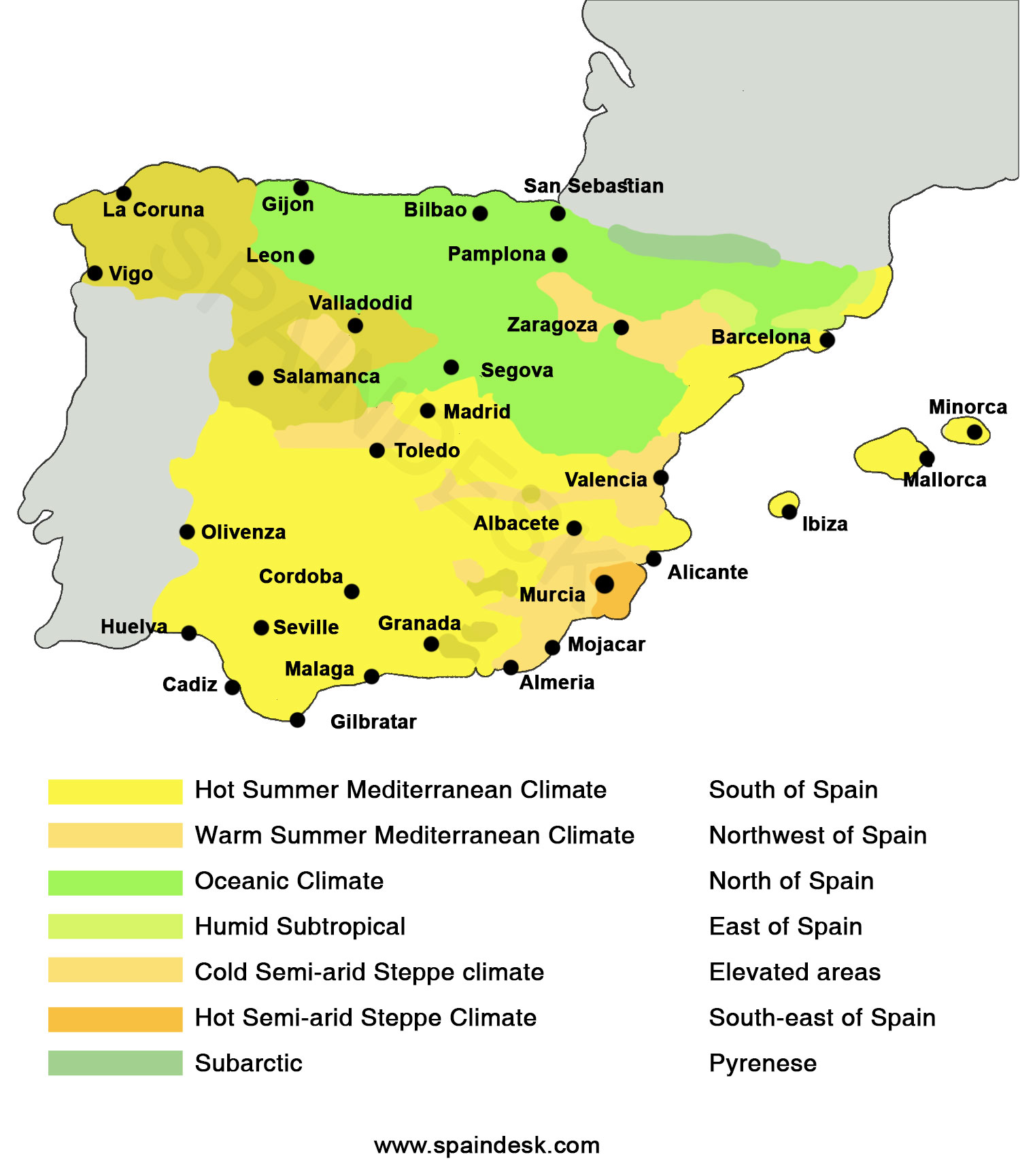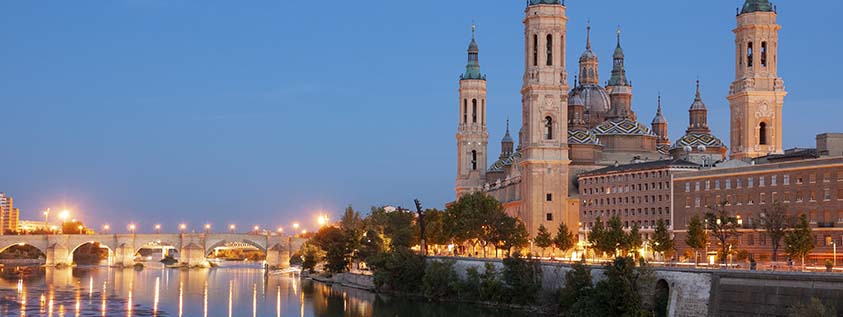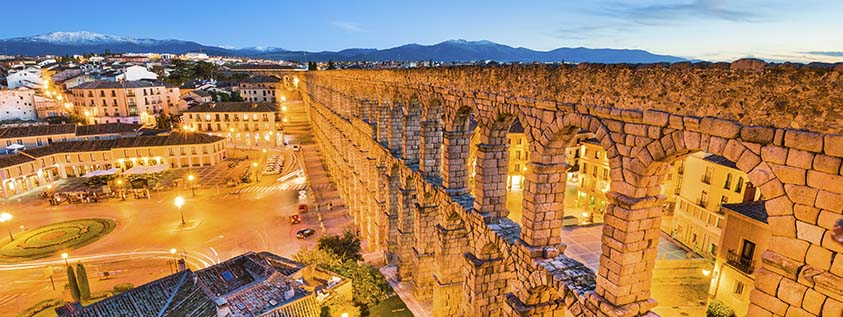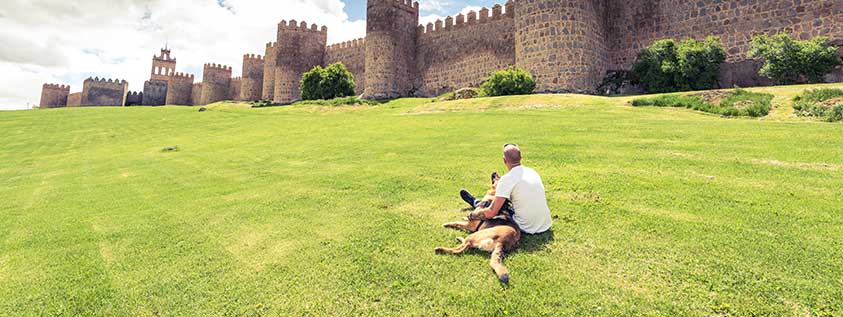Are you wondering what kind of stunning churches awaits your exploration in Spain? Spain has a wide range of incredible religious architecture, from century-old Gothic cathedrals to neoclassical-styled churches. Today’s blog post will explore some of the most beautiful churches in Spain that are well worth your visit. Let us look at some of Spain’s iconic houses of worship – providing historical background and tips for visiting each one.
How many cathedrals are in Spain?
Spain is home to nearly 100 awe-inspiring cathedrals and an abundance of extraordinary chapels, monasteries and churches. Each has remarkable features. Whether you visit Barcelona or Madrid on your next excursion to Spain, there will be many magnificent religious structures to explore and admire.

10 famous churches in Spain
When it comes to religious architecture, Spain is home to some of the world’s most impressive churches that reflect the country’s diverse history and culture. Below, we will explore the 10 most famous churches in Spain that are a must-visit for any traveler looking to delve into the country’s rich history and culture.
1. Burgos Cathedral
Rich in Gothic design, Burgos Cathedral is one of the most iconic churches in Spain. Its construction began in 1221. However, it was not completed until 1567, when its Baroque decorations were added. The ambitious Bishop Mauricio of Burgos initiated the construction of this grand Cathedral and put a halt in 1277. In 1567, the majestic Cathedral was finished.
The interior of the Cathedral includes a main chapel, choir stalls, and stunning stained glass windows– all ensconced within its intricate freestanding stone tracery. In the arched main doorway, you can see French Gothic artistry and architecture. On the exterior, a Latin cross plan is visible. The inside of the Cathedral also houses a magnificent collection of religious art from across Spain’s long history. The Cathedral of Burgos is an illustrious landmark in the city, as it stands atop the graves of Rodrigo Díaz de Vivar – El Cid – and his wife Doña Jimena, two highly acclaimed figures from 11th century Burgos.
2. Santiago de Compostela Cathedral
Santiago de Compostela Cathedral is one of the most famous churches in Spain and a UNESCO World Heritage Site. This magnificent Romanesque cathedral was originally established in the 900s. Sadly, the Moors destroyed it not long after. However, pilgrims’ generous donations during this era enabled them to rebuild the new cathedral at the end of the 11th century. It is not only this grand architecture that draws people to Santiago’s Cathedral but also the enchanting medieval legend behind its origin.
According to legend, after his death, Santiago’s remains were returned to Spain and laid to rest in Compostela. However, the grave was lost until 813 when a local shepherd noticed an unfamiliar star shining over the area in which Santiago’s remains were believed to be buried. This legend is known as “The Star of the Apostle” and has been used to symbolize Santiago’s Cathedral ever since. Word spread quickly around Europe of this miraculous discovery and the news inspired thousands of Christian pilgrims to embark on a holy journey to Santiago. Today, countless pilgrims still make the pilgrimage to Santiago. During “Holy Years”, when St James’ feast day of July 25th falls on a Sunday, visitation is at an all-time high.
3. Cathedral of the Holy Cross and St. Eulalia
Renowned locally as La Seu, this Cathedral is Barcelona’s most celebrated church and has become a notable landmark. The tower at Barcelona’s Cathedral of the Holy Cross and St. Eulalia appears to reach for heaven. Stepping inside the church, one can’t help but be in awe of its ornate carvings, paintings, and sculptures made from marble and masonry. The Cathedral’s centerpiece is the Gothic altarpiece of Saint Eulalia – a masterpiece designed to honor Barcelona’s patron saint. The bones of Eulalia, a Christian martyr who passed away at the tender age of 13 or 14 during Emperor Diocletian’s reign of terror against Christians in 304, are housed inside the Cathedral.
Throughout the centuries, La Seu has witnessed many famous visits, including that of Christopher Columbus when he returned in triumph from his first voyage to the Americas. Within the Cathedral, people can visit a small chapel dedicated to Columbus. It is a popular place for visitors to pay their respects.
4. Cathedral of Valencia
The Cathedral of Valencia, also known as the Basílica de la Virgen de los Desamparados, is an imposing building located in the old town of Valencia. Valencia’s breathtaking Gothic Cathedral boasts remarkable architecture and claims to be the home of one of Christianity’s most sacred artifacts: The Holy Grail. According to legend, this vessel was used in both Jesus’ Last Supper and Joseph of Arimathea’s miraculous collection of his blood during his crucifixion.
Pere Compte’s creative and innovative designs are what made the Gothic heart of this Cathedral so special. What makes it even more unique is its mixture of styles that demonstrate its evolution across time. Step into the majestic Cathedral, a fusion of Gothic and Baroque with Neoclassical elements. Inside you will find the extraordinary Santo Cáliz chapel, where an exquisite gold and agate Holy Grail rests. Interestingly enough, this religious site also is home to The Water Court – a conventional court that settles irrigation-related disputes among farmers in the area.
5. Granada Cathedral
Spanning the course of 180 years, this remarkable structure took many generations to complete. The commencement of construction began in 1523 and ended with the laying of its final stone in 1704. Distinctly amalgamating Gothic and Renaissance styles, this Cathedral is an architectural masterpiece.
When the Moors arrived in Granada during the 8th century, they brought their religion of Islam and built a Grand Mosque on its site. After centuries under Christian Spanish monarchs, it was transformed into one of Spain’s most exquisite churches -Granada Cathedral.
The stunning Cathedral, which is situated among narrow alleyways reminiscent of the old souk (market), boasts five naves, and multiple chapels—including both the Capilla Mayor (Main Chapel) and Capilla Real (Royal Chapel). It has a variety of Carrara marble royal tombs and an exquisite collection of artworks by illustrious masters such as Sandro Botticelli, Alonso Cano, and Rogier van der Weyden.
6. La Sagrada Familia
Constructing La Sagrada Família in Barcelona was Antoni Gaudí’s labor of love, as Catalonia’s most famous and beloved son. He put aside his commercial work to create what he envisioned would be his magnum opus and an expression of religious faith. His vision for the church was “for the poor,” relying solely on donations to fund its construction.
Construction of the structure began in 1883 but remained unfinished after Gaudí’s death in 1926. Even at the start of the 21st century, it had not reached completion. The Sagrada Família is the symbol of Barcelona. Its incredibly complex structure represents Gaudí’s remarkable imagination, genius, and faith. La Sagrada Família is an embodiment of the immeasurable creativity and unique style that Gaudí possessed. His designs combine Art Nouveau, organic curves, mystical shapes, and vibrant tiles – all reflecting his flair. Inevitably, after suffering from a fatal accident when he was hit by a tram in Barcelona streets – Gaudí found his final resting place in this basilica’s crypt. Unfortunately during the Spanish civil war, the workshop containing Gaudí’s drawings was set on fire.

7. Royal Chapel
The Royal Chapel in Granada holds a special place in Spanish history as the final resting place of two of Spain’s most powerful monarchs – Ferdinand and Isabella.
These two monarchs united their respective kingdoms with marriage, thus laying the foundation of Spain as a unified kingdom. These rulers are infamously renowned for conquering Granada, the last Muslim stronghold in the Iberian Peninsula, and sponsoring Christopher Columbus’ expedition to the Americas.
In the Royal Chapel, visitors can admire a richly adorned interior with marble and stone and Baroque decoration. Although the chapel is quite simple on the outside, its interior displays an abundance of ornamentation and detail. Inside, one can find chapels filled with beautiful works of art, including Isabella’s art collection and relics from that unforgettable campaign.
8. Seville Cathedral
The largest Gothic Cathedral in the world, Seville’s imposing structure was completed in 1528. It is a UNESCO World Heritage Site and home to the tomb of Christopher Columbus. The enormous Seville Cathedral is a testament to majestic Gothic architecture. It occupies 15,000 square meters and is visible from almost any part of the city.
In 1400, the construction of a rectangular mosque commenced and took more than one hundred years to complete. Two parts of the church remain from the original Almohad construction; the Patio de los Naranjos (orange tree courtyard) and two towers now home to the main chapel and the clock tower. Worshippers once cleansed themselves in a fountain at the entrance of the former mosque, now stands the Patio de los Naranjos—where a statue of the Virgin Mary marks the site. Once inside this majestic Cathedral, one can marvel at its exquisite artwork, including paintings, sculptures and wood carvings in various styles, from Gothic to Renaissance to Plateresque – all united under Baroque architecture.
9. Toledo Cathedral
The majestic Gothic beauty of Toledo Cathedral reveals the unique cultural blend found only in Spain. Taking inspiration from Chartres and other northern European cathedrals, this incredible building is a remarkable result of artistic collaboration between different cultures on the Iberian Peninsula. Master Martin may not have been well-known, but he left a lasting legacy with the beginning of the Cathedral. Petrus Petri took over in 1291 and was responsible for most of the construction. When visitors come to the Cathedral, they are immediately captivated by its two most renowned treasures – Narciso Tomé’s Transparente and El Greco’s Espolio. The former is an exceptional marble-alabaster altarpiece that appears ethereal when caught in a beam of sunlight. Yet it is perhaps the latter that steals hearts with its superb painting titled “The Disrobing of Christ”. With these masterpieces gracing the walls, one can understand why this Cathedral has become so cherished.
10. Valladolid Cathedral
King Philip II tasked renowned architect Juan de Herrera with creating Valladolid Cathedral, or the Catedral de la Nuestra Señora de la Asunción, in the 16th century. Following the death of both king and architect, El Escorial remained incomplete – until 1688. Diego de Praves, who had worked for Herrera, completed this stunning structure and its intricate details in the Baroque style. It features an impressive main façade with two towers, a grand entrance, and three naves divided by six columns supporting the roof. Finally, in 1730, Alberto Churriguera was commissioned to put a bow on the facade by emulating the Herreran style still in Spain today. Following the 1755 Lisbon earthquake, damage to the Cathedral caused one of its towers to collapse a century later in 1841. Although it was reconstructed, much of the church remains incomplete today.
This renowned Cathedral is also most admired for its majestic collection of music manuscripts rather than artworks. Boasting an awe-inspiring selection of over 6,000 original manuscripts, Valladolid Cathedral is a must-visit for any music aficionado. Among the few surviving musical works from the 15th century include polyphonic sacred music, romantic madrigals and carols from prominent composers such as Josquin des Prez and Juan de Anchieta.
What is the prettiest church in Spain?
Most people consider Sagrada Familia in Barcelona the prettiest church in Spain. It has become a famous landmark among Spanish churches. Designed by the renowned Catalan architect Antoni Gaudí, this awe-inspiring basilica uniquely combines Gothic and Art Nouveau styles.
Which is the oldest church in Spain?
Santiago de Compostela Cathedral is believed to be the oldest church in Spain. It was originally established in the 900s. Sadly, the Moors destroyed it not long after. However, pilgrims’ generous donations during this era enabled them to rebuild it at the end of the 11th century. In the 18th century, the local architect Fernando de Casas Nóvoa redesigned the exterior of the Romanesque building. However, much of its interior remains well-preserved.
A word from SpainDesk
Visiting the most famous churches of Spain can give you an incomparable insight into its history, culture, and tradition. While it is not possible to visit all of these memorable sacred sites in one journey, there is certainly no shortage of awe-inspiring edifices in this beautiful European nation that deserves your attention.
No matter which corner of Spain you visit, there will be an extraordinary church waiting for you to explore. So why not start your journey today and discover the marvelous churches in Spain? Whether you are a religious pilgrim or simply a curious traveler, visiting these famous churches in Spain will be an experience you’ll never forget. The vivid images of magnificence and grandeur from each of these masterpieces will stay in your heart and mind for years to come.

